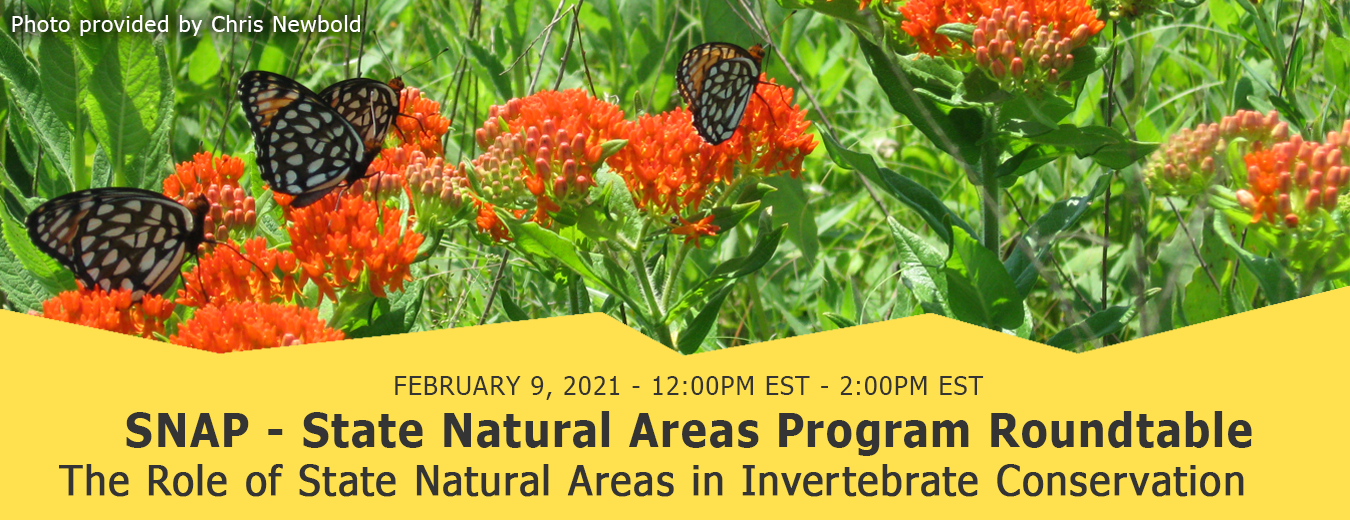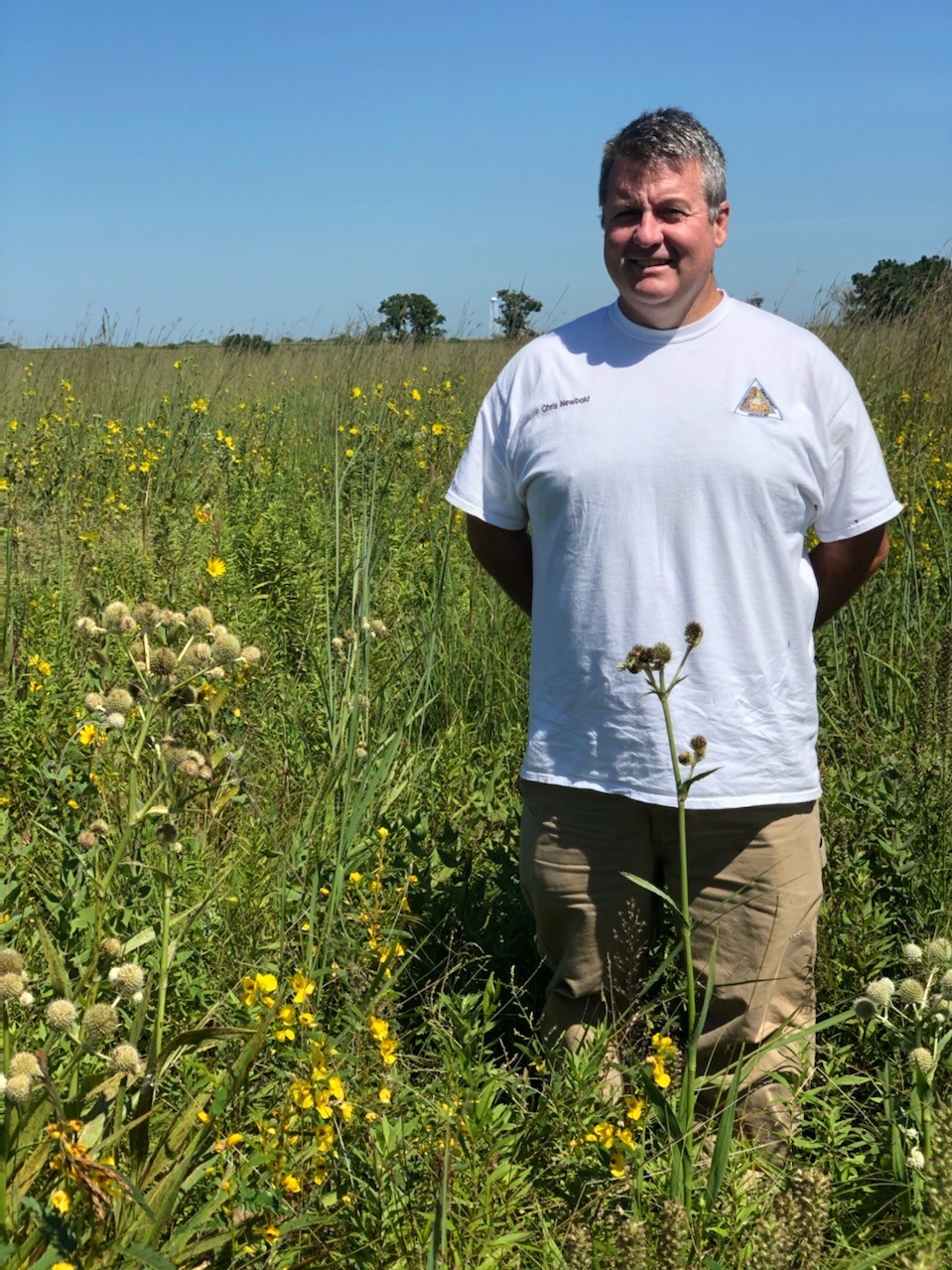
From the Insect Apocalypse to the precarious state of many important pollinator species, invertebrates have gotten deservedly more press in recent years. As E.O. Wilson has stated, these organisms, the little things that run the world, comprise a disproportionate total of native biological diversity and are critical for the functioning of our ecosystems. So, it stands to reason that state natural areas with their biologically significant lands and waters that are more commonly known for their native plant diversity are host to a significant share of our world‘s native invertebrate diversity. This virtual meeting will initiate what we hope will become the focus of future discussions regarding the role of state natural areas in invertebrate conservation. Included in this will be a focus on inventory, monitoring, and management towards conserving these little things.
Check out this meeting's agenda, abstract, video archive and speaker biography below.
Timestamps:
About NAA: 01:00
Main presentation: A Survey of Regal Fritillary (Speyeria idalia) on Select Southwest and West Missouri Prairies - Chris Newbold, Missouri Department of Conservation and Missouri Prairie Foundation 03:46
SNAP Member presentations:
1) Jeff Johnson - Ohio DNR - management strategies related to the use of prescribed fire and native plantings for pollinators 37:18
2) Tom Swinford - Indiana DNR Nature Preserves - update on odonate habitat restoration, Mitchell Satyr conservation, Cobblestone Tiger Beetle planning, Rusty Patch Bumblebee surveys and the Monarch Butterfly State Plan 48:31
3) Shelby Fulton - Office of Kentucky Nature Preserves - conservation of globally rare Rattlesnake-master Borer Moth and prescribed fire 57:55
4) Rick Myers/Ryan Klopf - VA Dept. of Conservation and Recreation - Division of Natural Heritage - VA Natural Areas Preserve system protects habitat for rare inverts with a focus on monitoring, conducting specific management practices to enhance habitat and tailoring management to avoid impacts 1:07:00
5) Jim Anderson/Patti Vitt - Lake County Forest Preserves - habitat restoration for invertebrates across several natural communities and geographic areas. Monitoring is a critical need. 1:18:26
6) AmberBeth VanNingen - Minnesota Dept of Natural Resources - overview of insect research including forest bee inventories, rare skipper/butterfly management and Lepidopteran peatland surveys 1:23:00
7) Theo Witsell - Arkansas Natural Heritage Program - prescribed fire considerations in invert conservation. 1:30:00
8) Angella Moorehouse - Illinois Nature Preserves Commission - using photography in pollinator surveys to assess natural area quality in West-Central Illinois 1:35:00
Closing Comments: 1:44:03
Chris Newbold, Missouri Department of Conservation and Missouri Prairie Foundation
Participants are invited to unmute to share ideas, techniques & methodologies, articulate issues and challenges, and invite suggestions and insights from your peers.
The Role of State Natural Areas in Invertebrate Conservation
Authors: Chris Newbold, Jerod Huebner, and Steve Buback.
Missouri Department of Conservation and Missouri Prairie Foundation
The regal fritillary (Speyeria idalia) butterfly is a tallgrass prairie endemic that is currently declining across much of its range, primarily due to habitat loss. Considering their declining status and a current status assessment review being conducted by the U.S. Fish and Wildlife Service, assessing the distribution and size of remaining regal fritillary populations in Missouri is important. From 2018-2020, we conducted transect surveys on 36 prairie parcels that were located in 6 West and Southwest Missouri prairie geographies. Prairie parcels included both private and public lands owned by private individuals, the Missouri Department of Conservation, the Missouri Prairie Foundation, and The Nature Conservancy. The objectives of the surveys were to: 1.) test the feasibility of using count surveys and N-mixture modeling to estimate regal fritillary populations, and 2.) provide information on the status of regal fritillaries within each prairie complex. Surveys were conducted using a combination of dependent-double observer line transect count and distance-from-observer methodologies. Regal fritillaries were documented at 5 or the 6 prairie complexes surveyed. Dependent double observer count data generated detection rates of regal fritillaries that ranged from 0.6563 – 0.7313. Abundance estimates ranged between 0 – 16.7 regals/HA with a mean abundance of 3.11 regals/HA. Spatial variation in abundance estimates suggest that remnant prairie quality, connectiveness and management play an important role in shaping regal fritillary populations.

photo provided by Chris Newbold
Chris Newbold is a natural history biologist from Boonville with the Missouri Department of Conservation's Central Region. He is based in Columbia and his work is tied to either restoring or reconstructing prairie land in Central Missouri. He received the Bill T. Crawford Prairie Professional of the Year Award.
Presenter Contact:
Address: 3500 E. Gans Rd. Columbia, MO 65201
Phone: (573) 815-7901 x2870
Email: Chris.Newbold@mdc.mo.gov
Support the people who manage our natural areas and protect biodiversity in perpetuity.